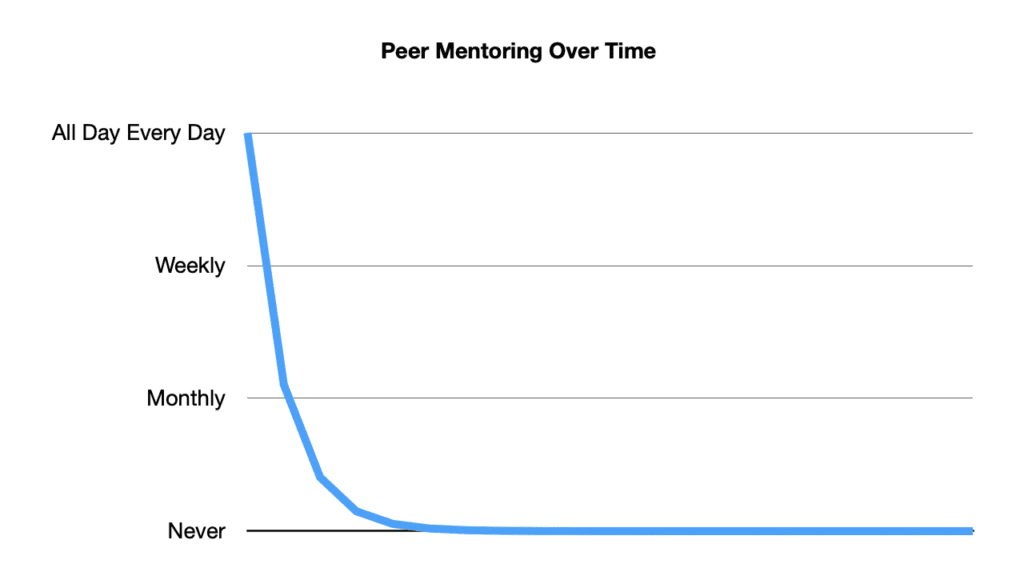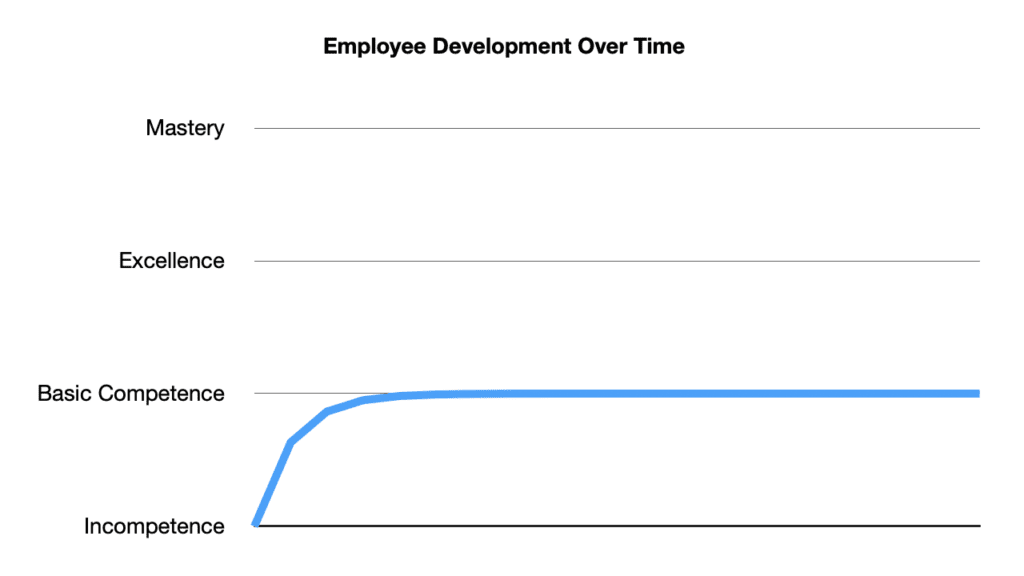Over the course of several articles now, we’ve talked about the value of a mentoring and coaching culture. It’s usually at about this point that people’s eyes start to gloss over as they retreat into their minds looking for a way out.
The thought of creating a mentoring and coaching culture can be (and often is) overwhelming. Where do you start? Because even if you’ve bought in, you know there are many people you have to convince to get your idea into action and on its way to becoming a reality. It’s a bit like standing on the beach looking out at the ocean, wondering how to boil it with nothing but the box of matches in your hand, and then a wave splashing up and soaking the matches.
Bummer.
Fortunately, you can start creating a world-class mentoring and coaching culture today. You don’t need to hire a fancy consultant or take your executive team on a 3-day offsite to plan or create a single policy or procedure.
It is so much simpler than that.
The easiest step toward building a strong mentoring and coaching culture is peer mentoring. In fact, it’s so easy I am willing to bet that it is already a widespread practice within your organization.
What is peer mentoring?
When a new employee joins a team, what happens? They may have some formal training, but ultimately they end up sharing a desk (or a Zoom session today) with someone who’s been in the role for a while. The more tenured employee will show them the ropes. They’ll teach them what tools to use and how to use them, who they need to communicate with, where they can find the data they need, and who to go to for help.
This is peer mentoring. It is shoulder to shoulder training, learning, and relationship building. It’s an efficient and effective knowledge and experience transfer. And when done right, it’s also an opportunity to engage fresh eyes to gain new insights.
Peer mentoring is shoulder to shoulder training, learning, and relationship building. It's an efficient and effective knowledge and experience transfer. And when done right, it's also an opportunity to engage with fresh eyes. Share on XThis is what mentoring is all about, and both the mentor and the mentee are better for it.
However, the great tragedy of peer mentoring is that it stops once the mentee has mastered (or is at least competent in) the basic tasks they need to do their job. Thus, if we were to draw a chart of peer mentoring over time, it would look like this.

There is a tremendous amount of activity at the start, and it drops off dramatically within a few days or weeks and dropping virtually to zero.
Same two people. Same difference in seniority. Same organization. Same roles. The only things that have changed are time and the ability to function within the basic demands of the role.
It should be no surprise then to see that our typical employee development path looks something like this. A burst of growth and development at the beginning that tapers off into a long series of imperceptibly small gains (a.k.a. stagnancy)

And yet, we sit back and wonder why employees are leaving in record numbers to work in other organizations and industries or retire altogether.
This is “set it and forget it” management, and it costs us a fortune.
I get it; I do. There’s no immediate fire here. The employee is getting by. We have more important matters screaming for our attention.
But we have to stop and admit this isn’t working. Only then can we do something about it.
What to do about it
The answer to our stagnant employee development isn’t more performance reviews or time with the manager. Especially since both have a limited impact as they compete for a fixed and valuable resource, management’s time.
The answer is peer mentoring. And before you write it off and skip to your next email or social media post. Consider this. One of the most powerful questions I ask my private coaching clients is this,
“If you were me, what advice would you give you right now?”
And almost every single time, the answer is right there.
You don’t need a consultant with a Ph.D. in anything to answer some of the biggest challenges your business is facing.
Instead, you need to give your front-line employees 5 minutes to ask each other that question and then serve as the lateral accountability to make it happen. As for you? You can sit back and watch the operations shift, profitability improve, and growth come faster than ever.
The virtues of peer mentoring
There are several reasons peer mentoring works so well
- There is a greater supply of peers than managers. This is the simple math of the equation. There are more peers to learn from (especially interdepartmentally). They are also easier to access as proximity and workload both work in your favor.
- Low overhead. There is almost no planning capacity required. No new policies, procedures, forms, or reports are needed. No protocols or reviews. All of that gets in the way and diminishes the value of peer mentoring.
- Both peers move their capacity curve upward. Not only does the mentee grow (past basic competence), but the mentor grows as well. The best way to learn something is to teach it. In my opinion, the best (if not only) way to achieve mastery is to teach the skill. Teaching requires you to understand the matter fully, break it down into parts, and string it together in one logical train of thought. It requires simplifying the matter to its essence, which can only be done if the subject is fully understood. Understanding your work in this way is a significant step toward mastery. The mentee’s additional mentoring moves them toward excellence and kicks off a new virtuous cycle. They are now able to mentor others. And as they do, they continue the learning journey toward mastery and develop others as well. In other words, both peers move their capacity curve upward.
- It’s a remarkably rewarding experience. The mentor gets to enjoy a new challenge and contribute positive change in the life of a coworker. The mentee gets to embark on a new challenge and enjoy knowing someone cares about them and their development. It’s difficult to overstate the value here. Unfortunately, it will never show up as an account on a balance sheet or a line item on a P&L enumerating the savings. And because of this inherent immeasurability, we are quick to forget it unintentionally or dismiss it outright.
Take the first step
Take the first step today. Go to your team, and tell them to pair up and take a 5-minute break together. You can have them ask any question you want, but if you’re stumped, don’t sweat it. Just use mine.
“If you were me, what advice would you give you right now?”


 Pave the Road to Future Success with an Internal Mentoring Culture
Pave the Road to Future Success with an Internal Mentoring Culture